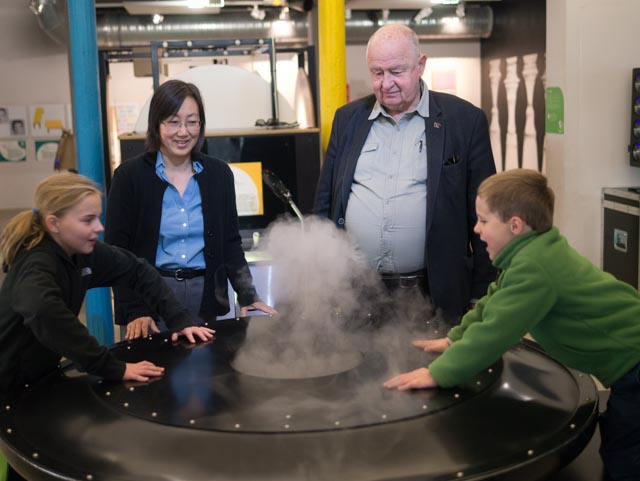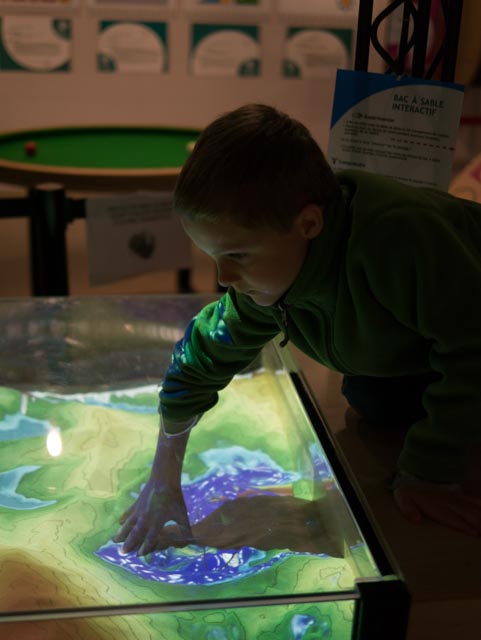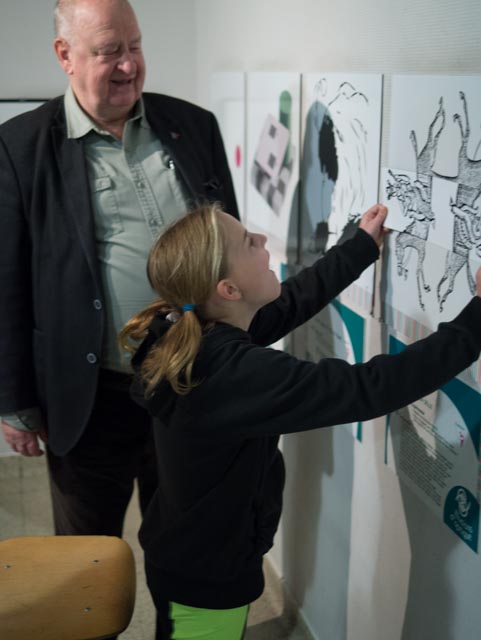Innovative applications of technology are found virtually everywhere, transforming all kinds of spaces into opportunities for STEM learning that move beyond the walls of classrooms and past schooltime hours. Persistent engagement and interest in meaningful learning activities and practices can spur an enduring pursuit of science.
Our Learning Everywhere initiative is exploring, prototyping, and creating new learning experiences—including exhibits, mobile apps, and user tracking technologies—that connect and coordinate learning across museums and bridge in-school and out-of-school time. To survey new learning spaces and interactive technologies, we visited two of our Learning Everywhere partners, At-Bristol and Exploradôme, as well as other science centers in the London and Paris areas, including the Science Museum of London and the City of Science and Industry at La Villette.
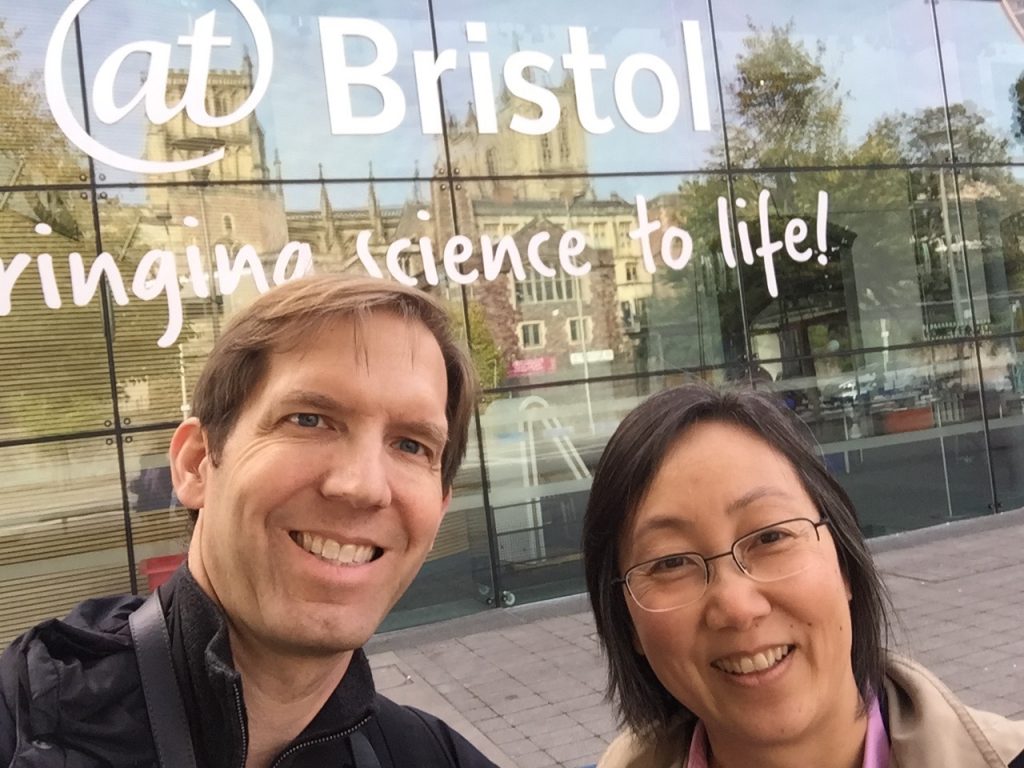
Donning our bracelets printed with unique barcode IDs at the entrance, we explored the many At-Bristol exhibits, scanning our bracelets to collect and compare our data with data from other visitors. At some stations, we learned how the creators of Wallace and Gromit, from Aardman Animations’ studios also in Bristol, made their great movies before creating our own stop-motion animations. A quick scan of our wrists saved these animations to a website where we could access them later. Other parts of our experience, from scatterplots of our height compared to other visitors to videos of ourselves on slow-motion “startle-cam” added themselves into our electronic portfolio during the visit. We even found ourselves wearing bee wings and performing a waggle dance to mimic bee behaviors in an exhibit about the mysterious lives of bees! This and other digital artifacts from our visit served as opportunities for further conversation and inquiry back home, and as a source of fun for our families. (Needless to say, the bee dance video was a source of great enjoyment, but it will not be showing up publicly on Instagram any time soon!)
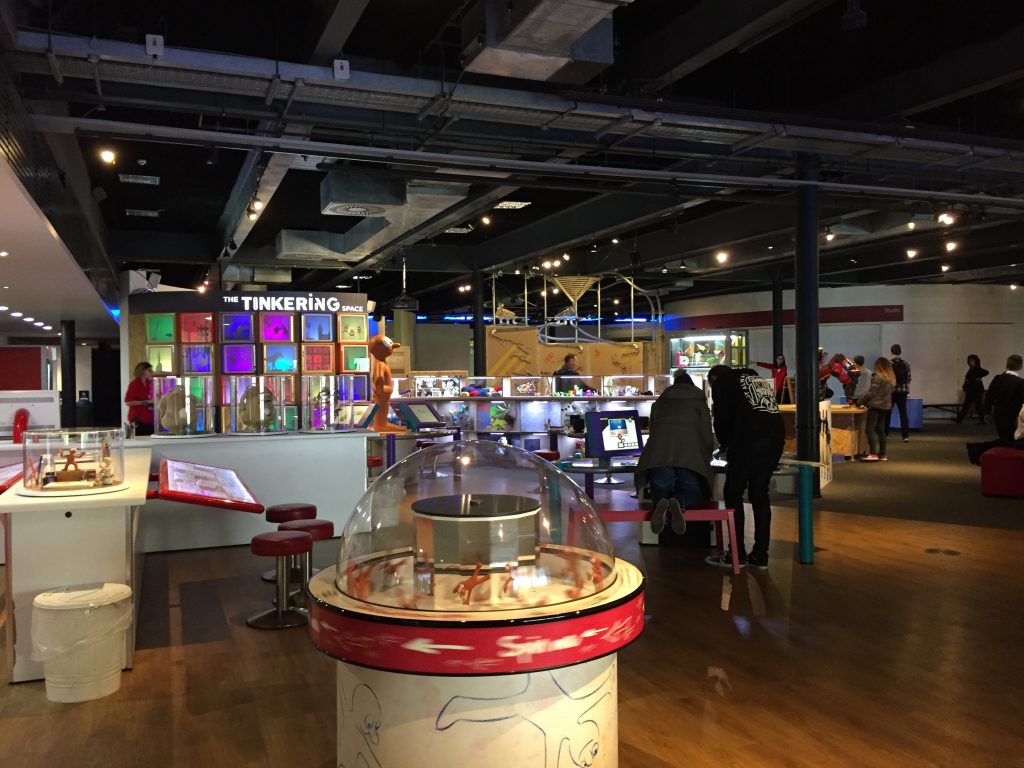
Our visit to London coincided with the grand opening of Wonder Lab at the Science Museum of London. Our guide, Dave Patten, Head of New Media there, showed us the spacious, colorful interactive gallery designed to encourage visitors to collaborate, play, and learn from conversation. In another exhibition, Engineer Your Future, teens and young adults use their personal mobile devices in public gallery spaces to design vehicles, then launch and control them on a huge public screen! Other large-screen and combined physical-digital exhibits featured different design-oriented and competitive games on energy, vehicle design, and different engineering careers.
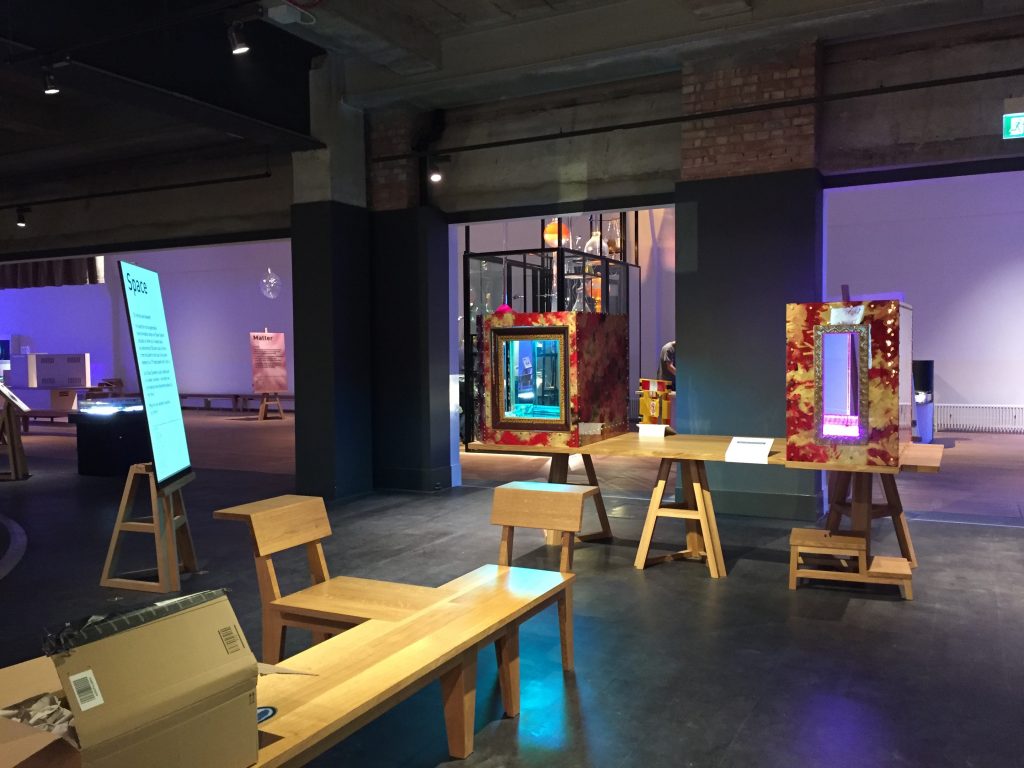
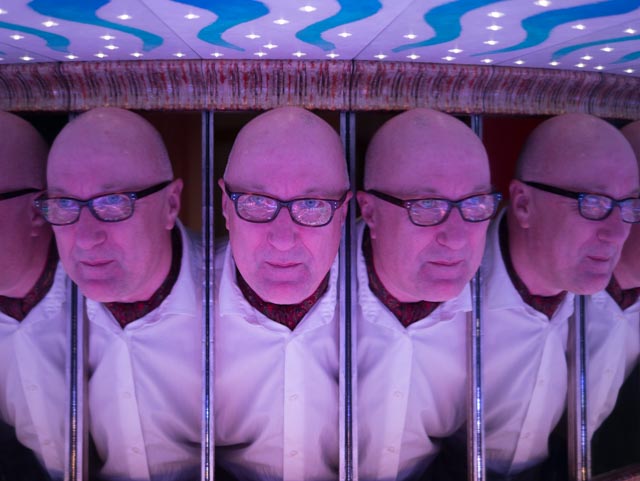
Moving farther south, we visited the Cité des Sciences et de l’Industrie in Paris, where an immense, airy space houses corners with multiple galleries of permanent and temporary exhibitions. Among them, designed areas invite reflection and discussion among school groups or individuals. In a highlight of the visit, François Vescia, Senior International Project Manager at the museum, gave us a tour of their fabrication laboratory, Carrefour Numerique. This public space is a wonderland of design and making, custom created to invite design collaboration and discussions that merge seamlessly into design and construction of physical prototypes and objects. Visitors access materials and machinery from e-textile design, milling machines, 3D printers, and laser and vinyl cutters to turn their visions into reality.
Drop-in and scheduled programs and workshops and in-person support are available, and visitors can begin designing projects digitally in the multimedia lab, then move next door to fabricate them.
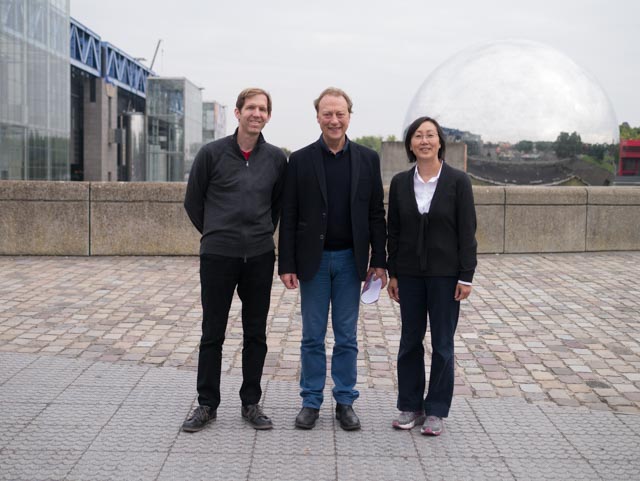
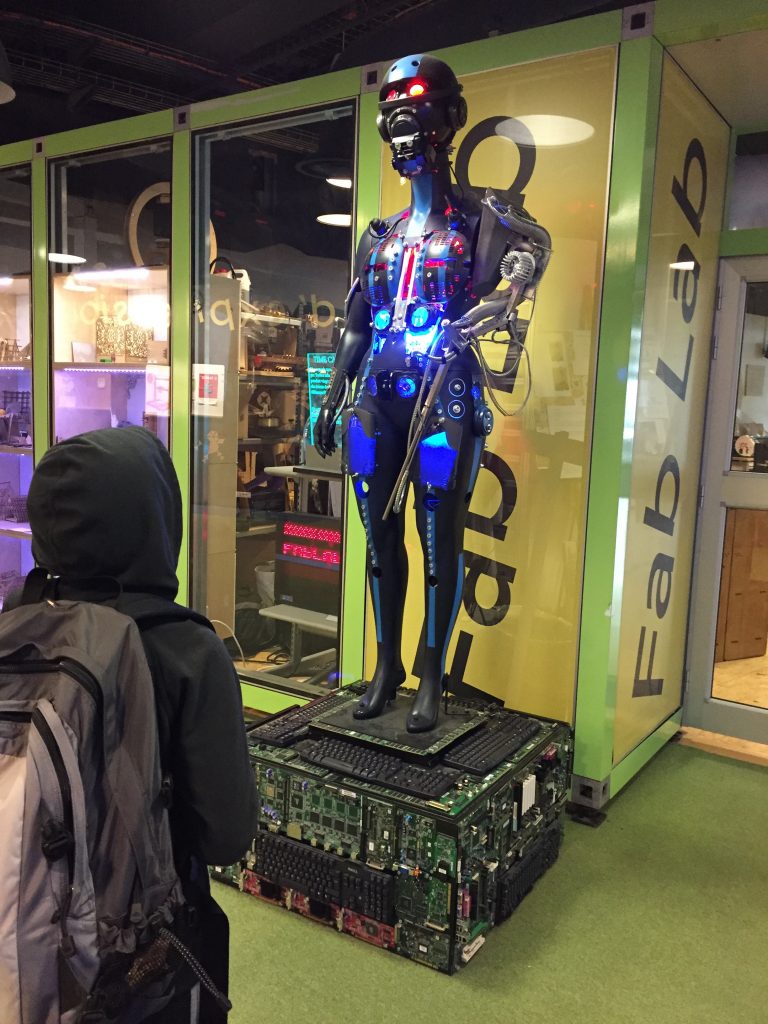
Taking the train to the southern suburbs of Paris, we visited the Exploradôme, where we met Goery Delacote, its founder and a longstanding member of the Concord Consortium Board of Trustees. Goery toured us among the great exhibits packed into the floor of this small museum, where the motto is “Not touching is not allowed!” Playing like kids (and some of us were!), we explored visual perception phenomena, dug holes for water in a version of the AR Sandbox Sherry helped create and worked together to launch six-foot smoke rings that rose to the ceiling.
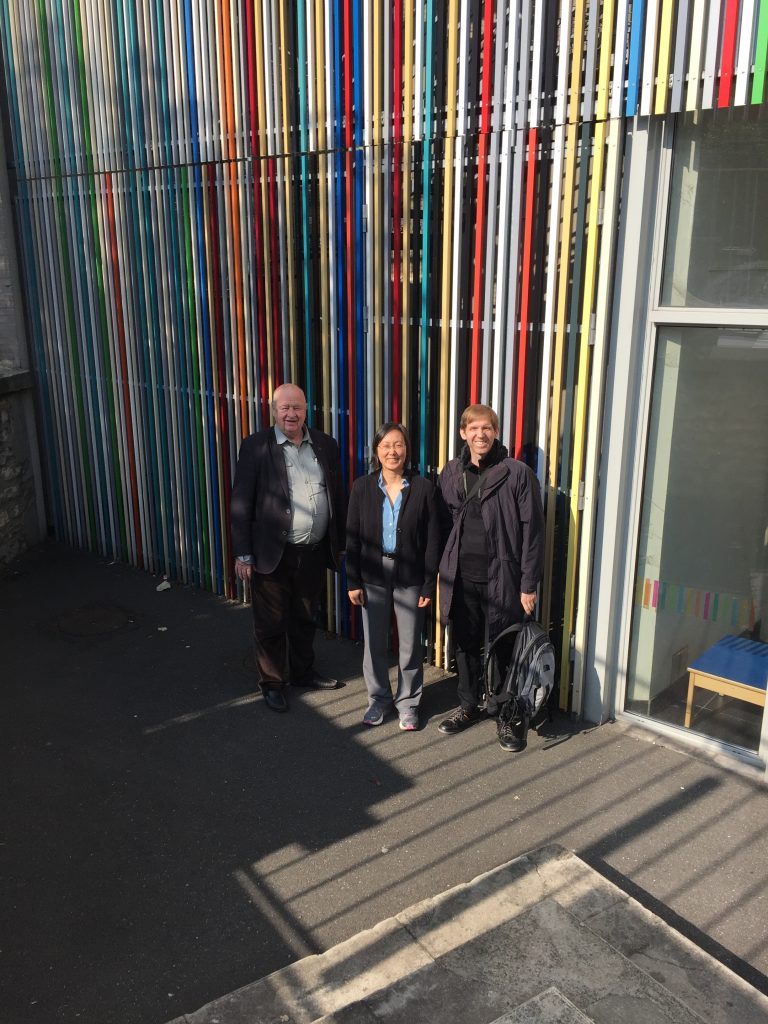
The thoughtful curation and orchestration of interactive exhibits throughout our Learning Everywhere tour was inspiring, as was the innovative use of technology to engage visitors and extend museum experiences beyond the visit. As we collate and catalog these experiences and technologies as part of the project work, we look forward to working further with museums and other out-of-school institutions to bridge and extend learning everywhere.
